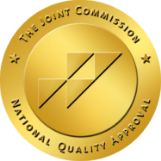
Morphine Sulfate Addiction and Treatment
What is Morphine Sulfate?
Morphine Sulfate is a classified Opiate (narcotic) Analgesic drug used to treat moderate to severe pain. Morphine Sulfate is available in a short-acting and extended-release form.1 Morphine Sulfate short-acting form is prescribed and taken as needed for pain. The extended-release form is used to treat pain around-the-clock.2 Morphine sulfate works by altering how the brain and nervous system respond to pain.
Is Morphine an Opioid?
The National Institute on Drug Abuse states, "Opioids are a class of drugs that include the illegal drug heroin, synthetic opioids such as fentanyl, and pain relievers available legally by prescription, such as oxycodone (OxyContin®), hydrocodone (Vicodin®), codeine, morphine, and many others." Opioids interact with opioid receptors on nerve cells in the body and on the brain. Analgesics drugs, such as Morphine or acetaminophen (Tylenol) are designed to relieve pain. Though not all analgesic drugs are opioids, Morphine is an opioid on the analgesic drugs list.
Brand Names
Familiarizing oneself with the various names of a drug can prevent overdoses from drug misuse. Morphine brand names include the following:
- MS Contin
- Astramorph
- Depodur
- Duramorph
- Infumorph
- Kadian
- MorphaBond
- Arymo ER
Liquid Morphine
Liquid Morphine Sulfate, or Roxanol, is a "highly concentrated solution of the narcotic analgesic morphine sulfate for oral administration used for the treatment of severe, chronic pain."3 Liquid Morphine dosage is prescribed per volume. The medication begins relieving pain about 15 to 30 minutes after consumption. Recognizing possible medication combinations in any form can reduce the risk of increased health issues. 4 Liquid morphine can interact with other medications that depress the central nervous system such as barbiturates, tranquilizers, general anesthetic medications, and other narcotics.
Dilaudid vs. Morphine
Dilaudid, also known as Hydromorphone, is an injection prescribed to relieve pain.4 Hydromorphone is a classified opiate analgesic drug that alters how the brain and central nervous system respond to pain. 9 Hydromorphone is injected under the skin into either a vein or a muscle, and it is typically used every 2 to 3 hours as needed. When comparing Dilaudid vs. Morphine, Dilaudid is a more potent drug and requires less dosage to equal the effects of Morphine.
Morphine Dosage
Morphine dosages vary in form and strength.5
| Brand Name | Form | Dosage |
|---|---|---|
| MS Contin | Tablet, extended-release | 15mg, 30mg, 60mg, 100mg, 200mg |
| Depodur | Injectable suspension, extended-release | 10 mg/mL |
| Duramorph | Injectable solution, extended-release | 0.5 mg/mL 1 mg/mL |
| Infumorph | Injectable solution, high potency | 10 mg/mL (200 mg/20mL ampule) 25 mg/mL (500 mg/20mL ampule) |
| Kadian | Capsule, extended-release | 10 mg, 20 mg, 30 mg, 40 mg, 50 mg, 60 mg 70 mg, 80 mg, 100 mg, 130 mg, 150 mg, 200 mg |
| MorphaBond | Tablet, extended-release | 15 mg, 30 mg, 60 mg, 100 mg |
| Arymo ER | Tablet, extended-release | 15 mg, 30 mg, 60 mg |
Signs and Symptoms of Morphine Sulfate Addiction
As with any drug, as tolerance increases and dependence builds, addiction can form.
Common physical signs of morphine addiction include:
- Abdominal pain
- Nausea
- Fatigue
- Headache
Common behavioral signs of morphine addiction include:
- Itching
- Anxiety
- Slurred speech
- Lack of focus
- Shallow breathing
Morphine Side Effects
Morphine side effects may vary from person to person. Morphine side effect factors depend on a person's weight, water intake, and overall health. The difference in morphine side effects also varies based on the dosage and form of the drug. Morphine side effects range from mild to severe.
Short-term morphine side effects include:6
- Nausea and Vomiting
- Constipation
- Itching
- Loss of Appetite
- Lower Body Temperature
- Difficulty Urinating
- Slow Breathing
- Sleepiness
- Changes in Heart Rate
- Weakness
- Dizziness Upon Standing Up
- Confusion
- Nervousness
- Erectile Dysfunction
Long-term morphine side effects include:
- Chronic Constipation
- Poor Appetite
- Reflux
- Bloating
- Stomach Pain
- Dry Mouth
- Weight Loss
Issues related to hormonal changes include:
- Increased Blood Sugar
- Problems with Menstruation
- Osteoporosis and Risk of Fractures
- Immune-Related Issues, Like the Risk of Infection
- Sexual Dysfunction
Morphine Overdose
Morphine overdose occurs after high levels of the drug contaminate the blood.7 According to the U.S. National Library of Medicine, "Naloxone is used to reverse the life-threatening effects of an overdose. It works by blocking the effects of opiates to relieve dangerous symptoms caused by high levels of opiates in the blood."
Morphine overdose symptoms include:
- Difficulty Breathing
- Sleepiness
- Unable To Respond Or Wake Up
- Limp Muscles
- Cold, Clammy Skin
- Small Pupils
- Slow Heartbeat
- Blurred Vision
- Nausea
- Fainting
- Slow, Shallow, Or Irregular Breathing
Morphine Withdrawal
Withdrawal symptoms vary from drug to drug. Morphine withdrawal symptoms range from mild to severe upon an abrupt stop of taking it.8 Morphine withdrawal symptoms include:
- Anxiety
- Runny Nose
- Sweating
- Drug Cravings
- Thoughts of Suicide
- Trouble Sleeping
- Depression
- Agitation
- Body Aches
- Nausea and Vomiting
- Diarrhea
- Cramping
- Moodiness
- Lack of Concentration
Morphine is found in the blood and saliva for up to 3 days, in the urine for up to 4 days, and in the hair for up to 90 days.
Treatment Options
Treating opioid addiction, such as morphine addiction, is possible through a variety of routes. The preference depends on the individual and the individual's health.
Detox
Detoxing opioids develop abrupt withdrawal symptoms as soon as the last dosage was taken. The effects of withdrawal vary from mild to severe.
Medication-assisted Treatment
Medicines used for medication-assisted morphine treatments include methadone, buprenorphine, and naltrexone.9 These medicines target the same area in the brain as other opioids but do not give the user a high.10
Inpatient Rehab
Inpatient rehab offers individuals treatment advantages over outpatient programs. The resources in inpatient rehabilitation include counseling. Individual counseling includes:
- Cognitive-behavioral therapy helps an addict recognize and cease negative patterns of thinking and behavior. CBT can teach addict coping skills to manage stress and decrease a dependency on opioid misuse.11
- Motivation enhancement therapy builds one motivation to continue their treatment plan.
- Contingency management focuses on providing incentives for positive behaviors such as avoiding drug abuse.
Along with individual counseling for Morphine treatment, group and family counseling are also available.
Resources
- https://www.uofmhealth.org/health-library/d00308a1
- https://medlineplus.gov/druginfo/meds/a601161.html
- https://www.drugabuse.gov/drug-topics/opioids
- https://www.rxlist.com/consumer_morphine_duramorph_arymo_er/drugs-condition.htm
- https://www.healthline.com/health/pain-relief/morphine-side-effects#long-term-side-effects
- https://www.verywellmind.com/how-long-does-morphine-stay-in-your-system-80288
- https://www.rxlist.com/roxanol-drug.htm
- https://www.oncolink.org/cancer-treatment/oncolink-rx/morphine-sulfate-liquid-roxanol-r
- https://medlineplus.gov/druginfo/meds/a601148.html
- https://medlineplus.gov/druginfo/meds/a682133.html
- https://medlineplus.gov/opioidmisuseandaddictiontreatment.html

